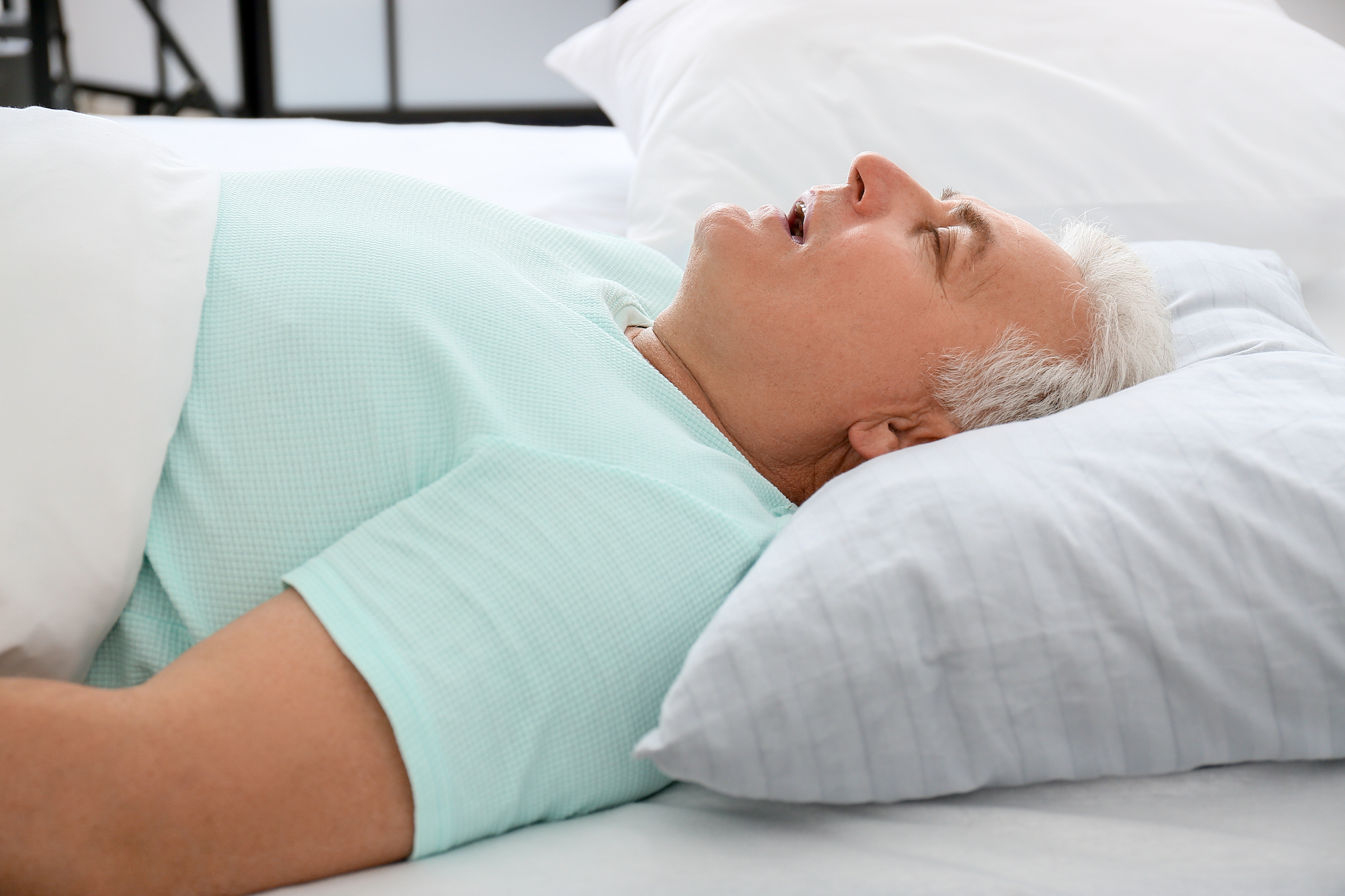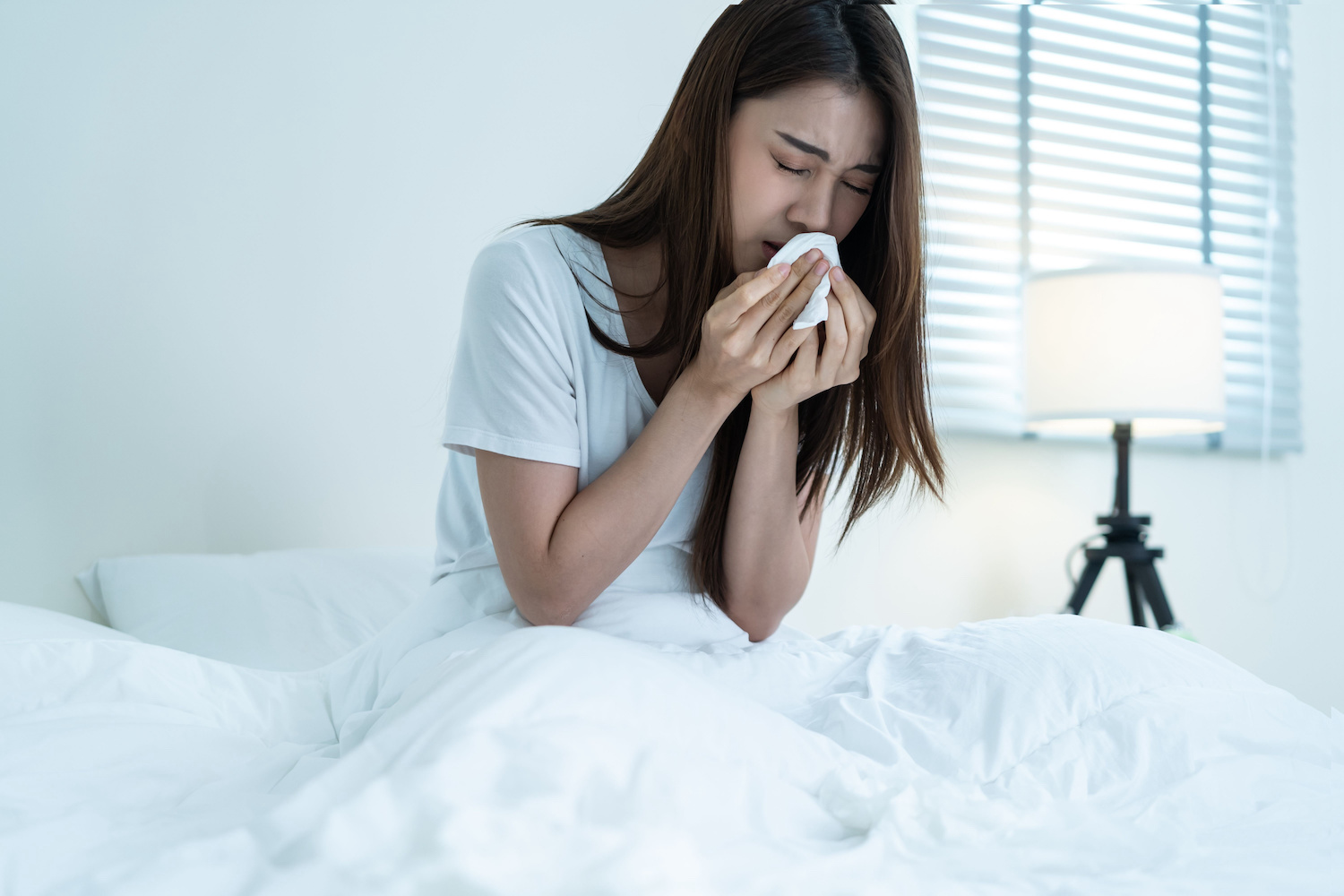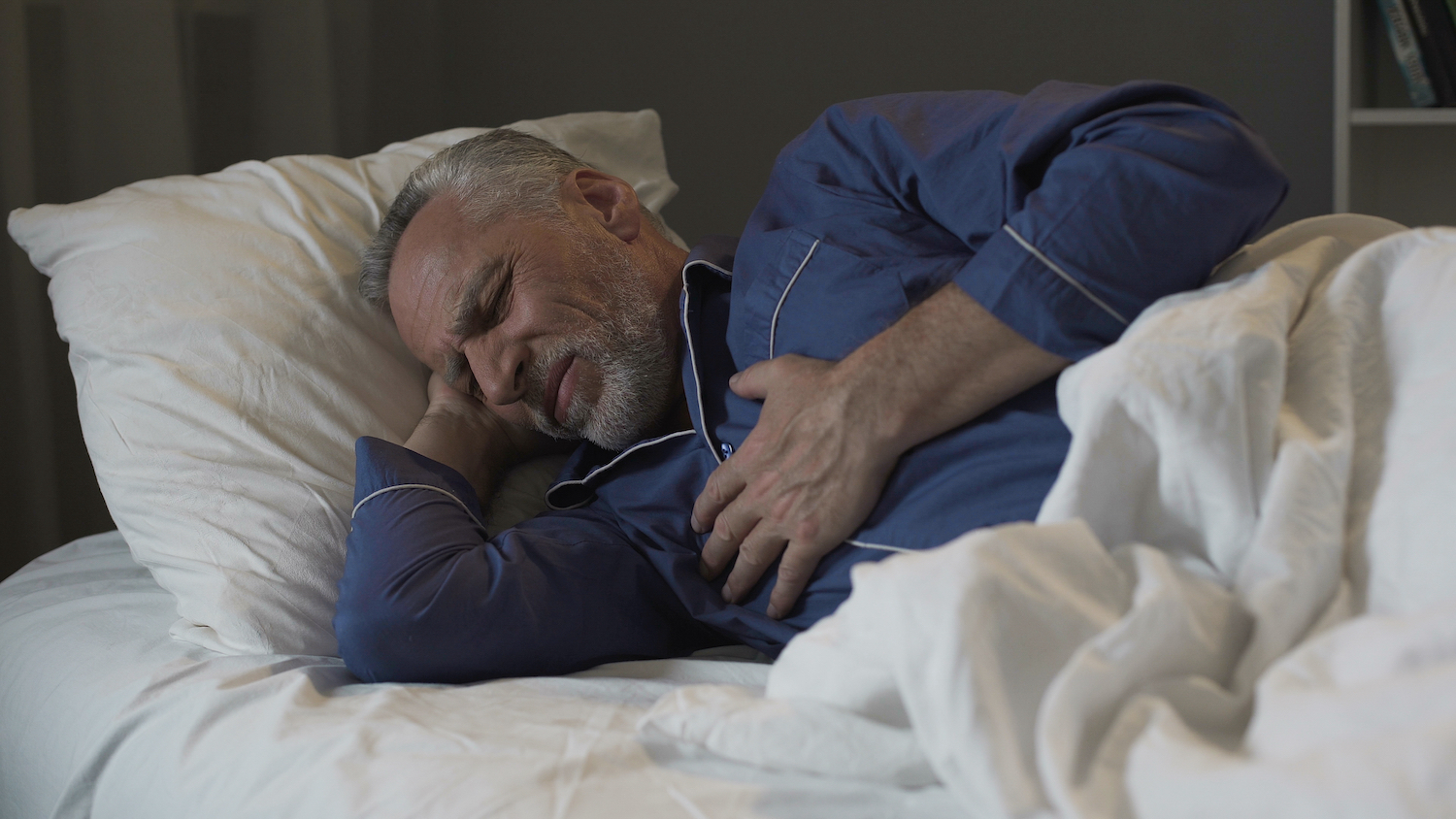Overlap syndrome is a general term used to describe when a person has multiple medical conditions that, together, create a unique set of symptoms or change the course of each disease. One potential type of overlap syndrome involves a person having both obstructive sleep apnea (OSA) and chronic obstructive pulmonary disease (COPD).
Obstructive sleep apnea is the most common form of sleep apnea and causes brief reductions or pauses in breathing during sleep. COPD is a chronic lung condition that advances over time and interferes with breathing in the daytime and during sleep.
Think You May Have Sleep Apnea? Try an At-Home Test

our partner at sleepdoctor.com
10% off Home Sleep Tests
Buy Now“Truly grateful for this home sleep test. Fair pricing and improved my sleep!”
Dawn G. – Verified Tester
How Are COPD and Sleep Apnea Linked?
COPD and OSA are both common breathing-related medical conditions. COPD affects more than 6% of people in the United States, while obstructive sleep apnea occurs in around 10% to 30%. While estimates vary, studies suggest that around 1% of people have overlap syndrome, meaning they've been diagnosed with both COPD and OSA.
These conditions share several risk factors. Factors that increase the chances of developing both COPD and OSA include smoking, the use of opioids, heart-related conditions, and obesity.
Despite these similarities, experts are unsure if COPD and sleep apnea are truly an overlap syndrome, meaning that together they cause new symptoms or effects, or if the two conditions are frequently diagnosed together because both are common.
Can COPD Cause Sleep Apnea?
Although several theories exist about possible relationships between COPD and sleep apnea, it's unknown whether COPD causes or contributes to the development of obstructive sleep apnea. While some studies have shown an increased risk of OSA in people with COPD, other studies haven't found this connection.
Risks of Overlap Syndrome
Studies have found that overlap syndrome affects sleep quality, COPD symptoms, the risk of other health issues, and a person’s overall quality of life.
- Sleep quality: Both COPD and OSA are associated with sleep issues. However, people with overlap syndrome tend to have more nighttime awakenings and worse sleep quality than those with either COPD or OSA on their own.
- COPD symptoms: Research suggests that overlap syndrome causes more frequent flare-ups of COPD. During a COPD flare-up, a person may cough more, spit up mucus, and have difficulty breathing.
- Health issues: Overlap syndrome is linked to an increased risk of potentially severe cardiovascular diseases, including heart failure, high blood pressure, and irregular heart rhythms. Together these conditions can also affect a person’s life expectancy.
Many of the risks associated with overlap syndrome stem from the lower blood oxygen levels people with COPD and OSA experience during sleep.
Lower blood oxygen levels happen with these disorders for a few reasons. COPD makes it more difficult to breathe and affects the lungs’ ability to exchange carbon dioxide for oxygen. These changes reduce the amount of oxygen in the blood, an effect that can be exacerbated by natural changes in breathing that happen after falling asleep.
OSA also interferes with the body’s ability to get enough oxygen during sleep. When the airway becomes blocked due to OSA and the sleeper’s breathing is briefly restricted or stopped, the level of oxygen in the blood decreases.
While both COPD and OSA can contribute to low oxygen levels, overlap syndrome is associated with more severe loss of oxygen than either condition on its own. Researchers believe that this is the primary reason why overlap syndrome may increase a person's risk of developing other health issues, like heart disease.
How Overlap Syndrome Is Diagnosed
The way that doctors test for overlap syndrome depends on an individual’s medical history and symptoms. In people with COPD, doctors may recommend a sleep study if they identify potential complications of OSA, like high blood pressure, or symptoms of sleep apnea such as:
- Snoring
- Waking up choking or gasping
- Difficulty sleeping
- Headaches in the morning
- Daytime tiredness
- Difficulty with memory or concentration
Experts consider an overnight sleep study the optimal test for diagnosing overlap syndrome in people with COPD. Doctors may also recommend that a person use an at-home pulse oximeter to measure blood oxygen levels overnight.
In those previously diagnosed with OSA, doctors may recommend testing for overlap syndrome in current or previous smokers, as well as those who have symptoms of COPD, including:
- Feeling out of breath or unable to get enough air
- Frequent cough or wheezing
- Persistent fatigue
- Recurrent respiratory infections
- Shortness of breath during physical activity
Doctors may also recommend testing for overlap syndrome in people with OSA who are found to have abnormal levels of oxygen or carbon dioxide during the daytime.
Testing for overlap syndrome is important because it enables doctors to recommend appropriate treatment and conduct further testing to detect potential complications of the condition.
Sleep Apnea and COPD Treatment
Often, treating overlap syndrome involves treating OSA and COPD individually. To manage both conditions at the same time, doctors will consider an individual’s unique needs and the severity of each condition. Treatment goals are to improve sleep, normalize nighttime oxygen levels, and reduce the health consequences of both conditions.
Treatments that address OSA symptoms include behavior changes, like avoiding alcohol consumption, and positive airway pressure (PAP) therapy. COPD treatments may involve medication, advice to quit smoking, and oxygen therapy.
Positive Airway Pressure Therapy
PAP therapy is the cornerstone of treatment for people with overlap syndrome. By helping keep the airway open during sleep using pressurized air, PAP therapy has been shown to improve a person’s life expectancy, minimize nighttime breathing disruptions, reduce COPD flare-ups, and help people better tolerate exercise during the day.
Doctors typically start people with overlap syndrome on a continuous positive airway pressure (CPAP) device. Other types of PAP devices may be recommended for people who require a high level of air pressure during sleep.
Behavior Changes
Doctors may recommend several lifestyle changes in people diagnosed with overlap syndrome.
- Quit smoking: Quitting smoking is the most important way to slow the progression of COPD and can help people better manage the symptoms of OSA.
- Increase exercise: Exercise can reduce the effects of both COPD and OSA, as well as improve a person’s mood and quality of life. It’s important for people with COPD to work with a doctor to create a structured exercise program, which may be integrated into a broader program called pulmonary rehabilitation.
- Minimize triggers: To reduce COPD flare-ups, people should minimize triggers like exposure to high or low air temperatures, stress, pollution, and smoke from tobacco or fireplaces. Triggers for OSA include alcohol and medications that have a sedating effect.
- Get vaccinated: Illness can also trigger flare-ups of COPD and may exacerbate the severity of OSA. Experts recommend that people with both conditions get vaccinated according to their doctor’s recommendations.
Although behavior changes may be recommended for overlap syndrome, one important exception is weight loss. While weight loss is recommended for people with obesity and OSA, weight loss may not be recommended as a treatment for people with COPD or overlap syndrome.
Living With Overlap Syndrome
Because overlap syndrome is associated with an increased risk of health complications, it’s important to follow your doctor’s recommendations related to treatment and lifestyle changes.
There is currently no cure for COPD and complete recovery from OSA is uncommon. However, treatment for these conditions can have a significant impact by reducing symptoms, improving sleep, and slowing the advancement of COPD.
If you've been prescribed a CPAP or other PAP device, it’s especially important to use it every night and reach out to your doctor if you have difficulty using it consistently. Consistent use of a PAP device has been shown to reduce COPD flare-ups, decrease hospital visits, and improve the life expectancy of people with overlap syndrome.








